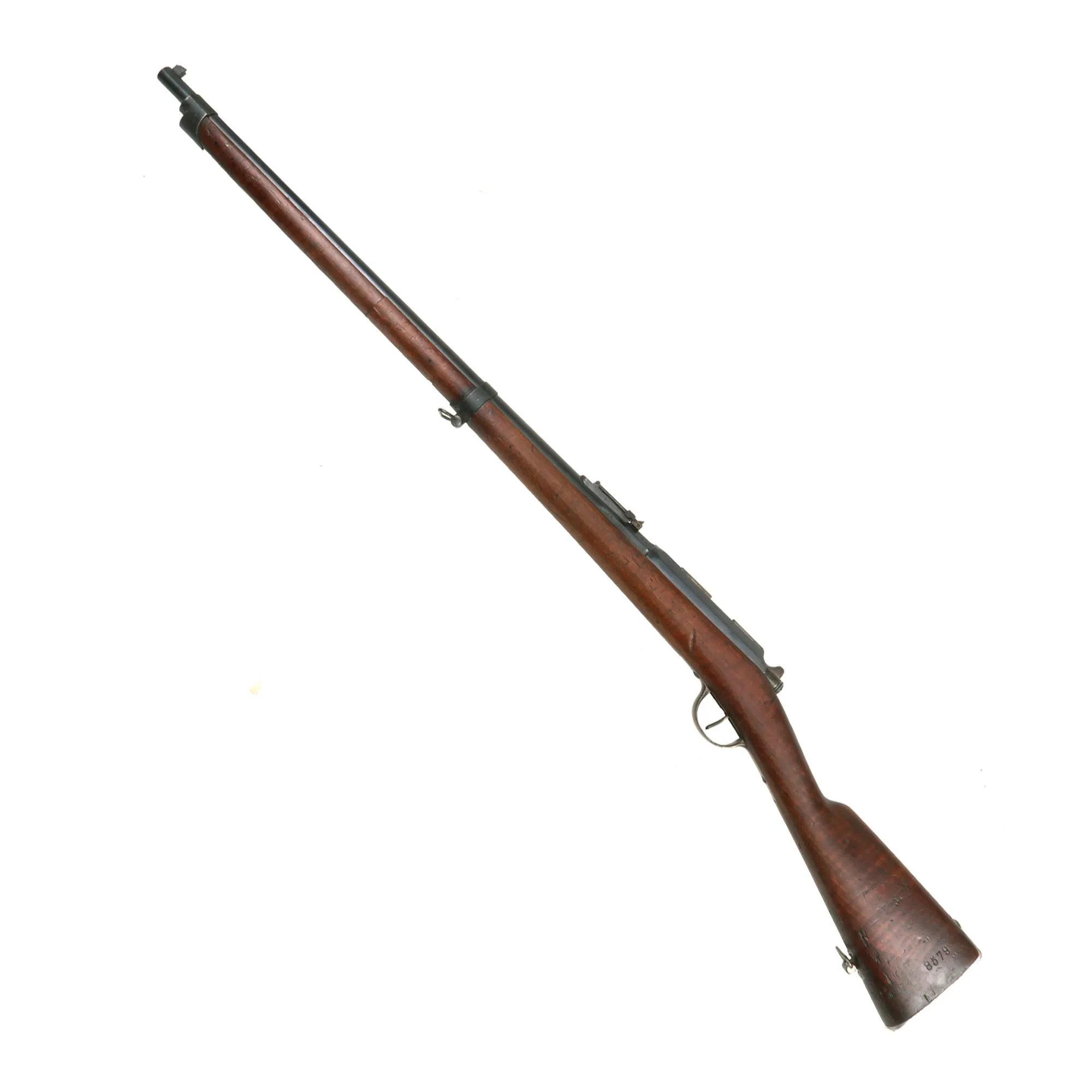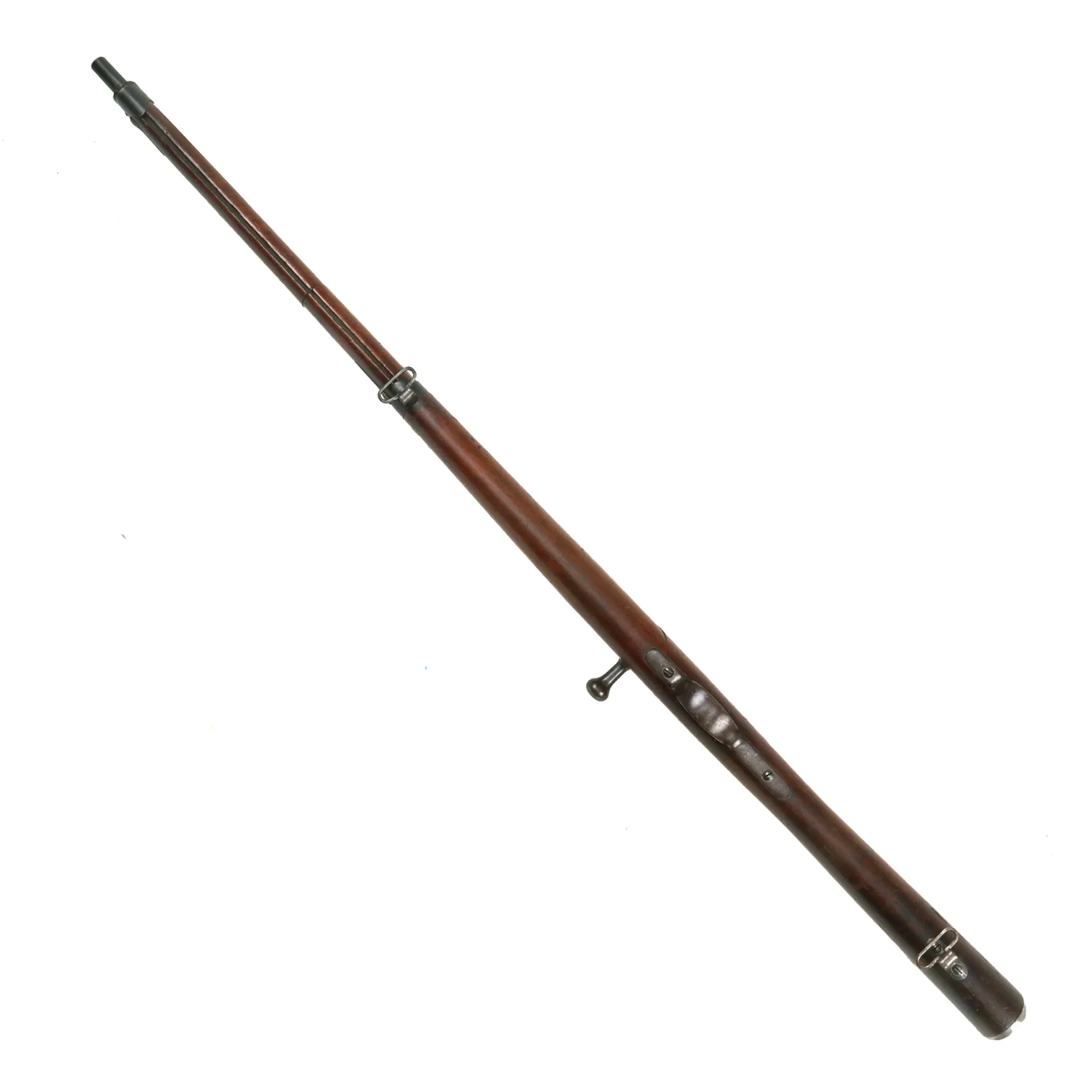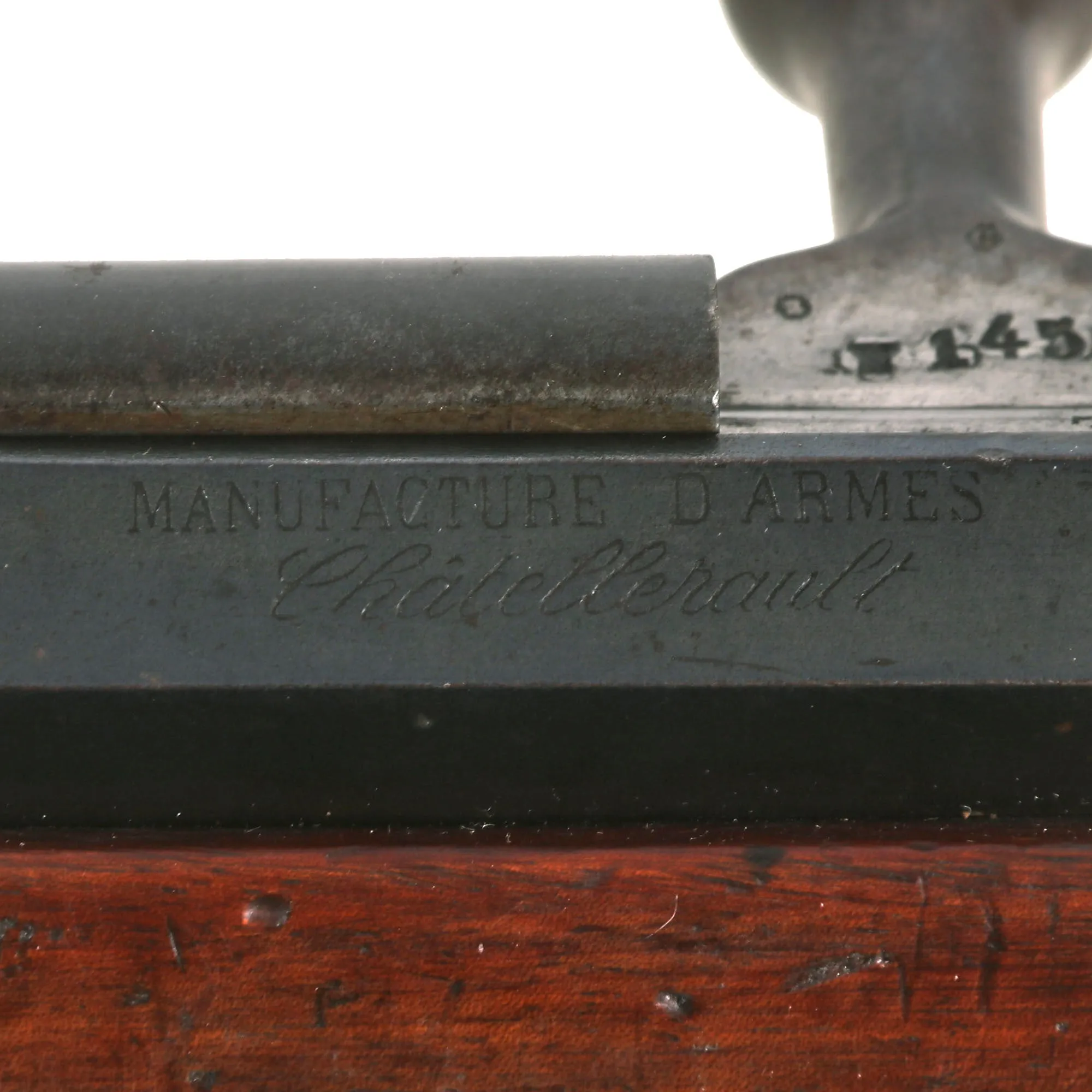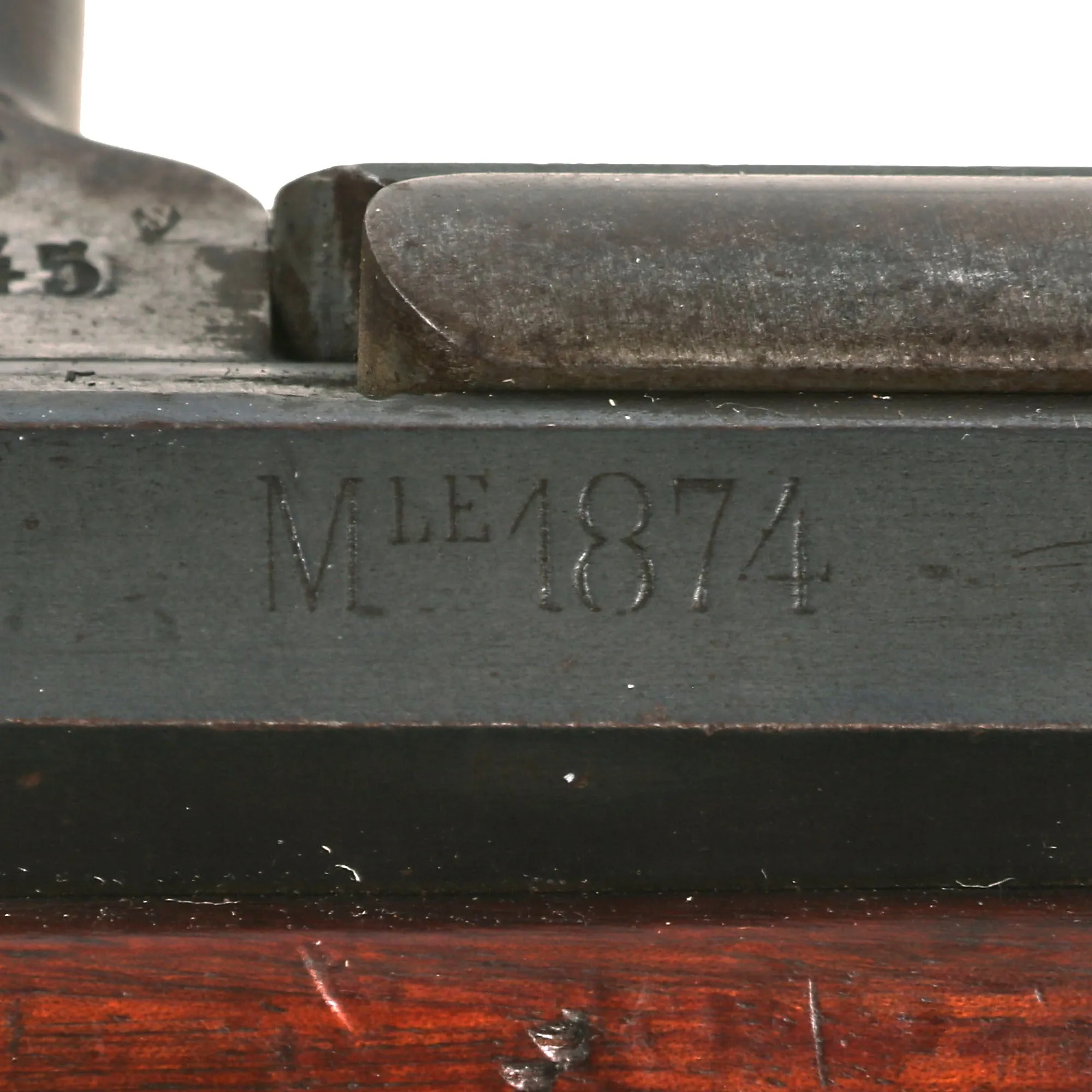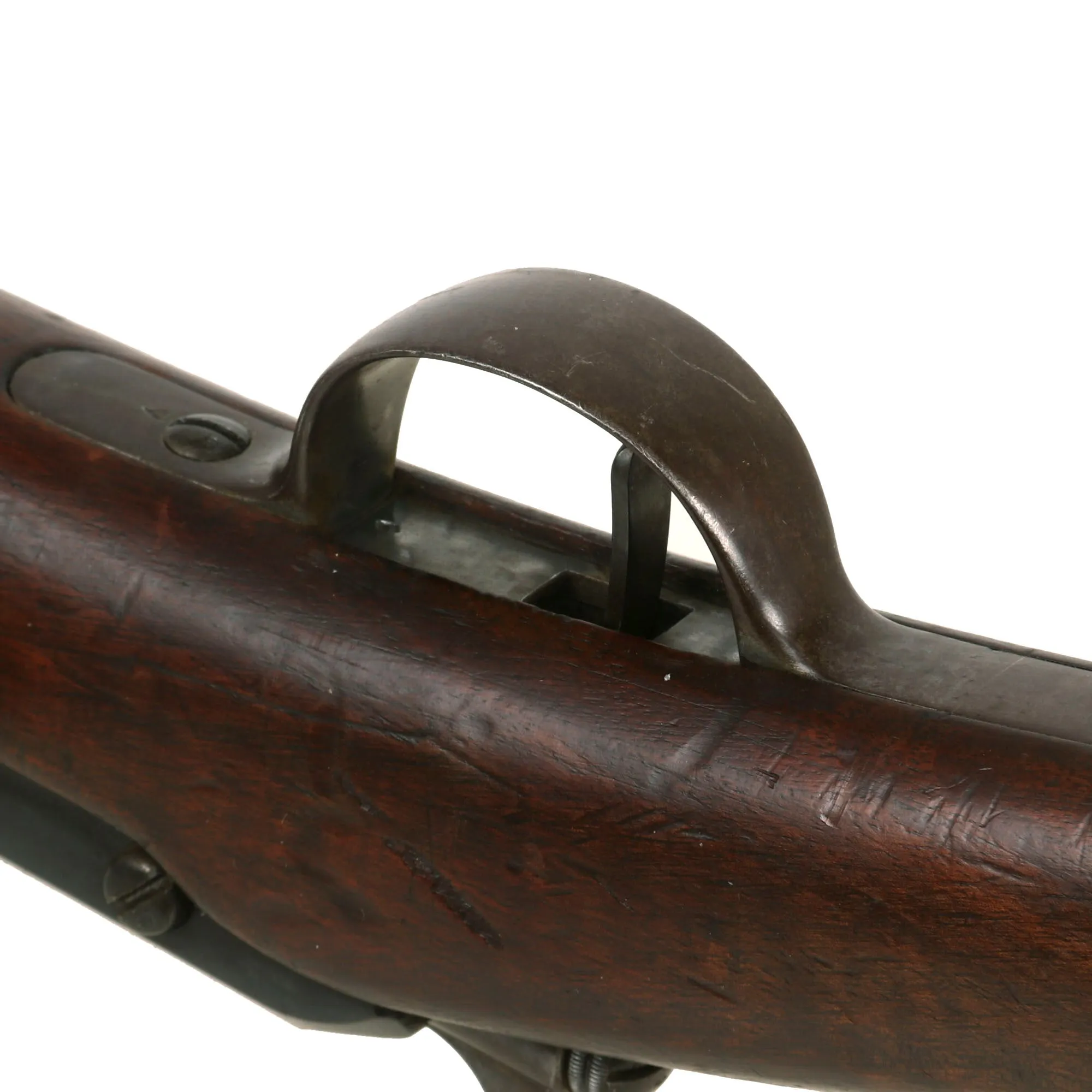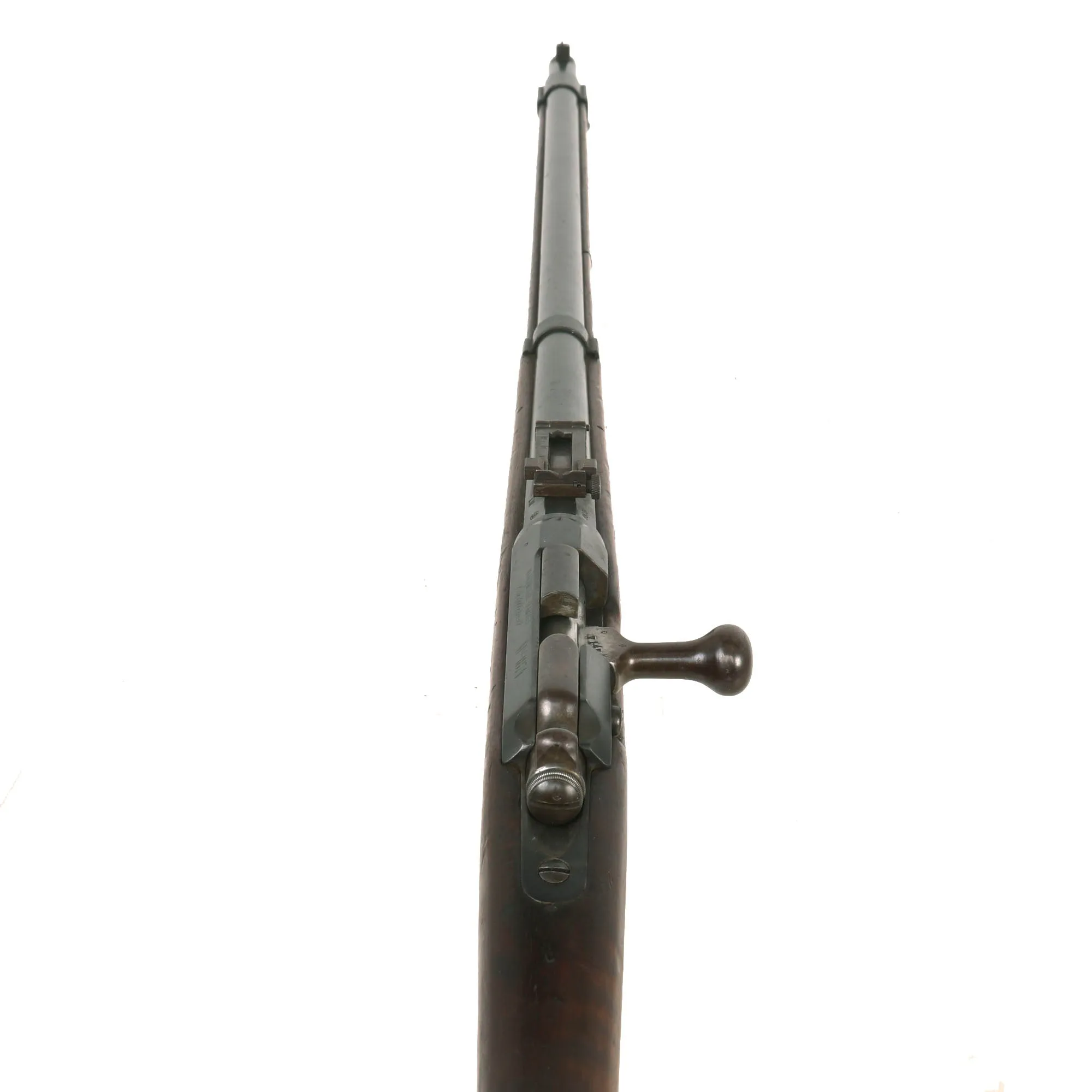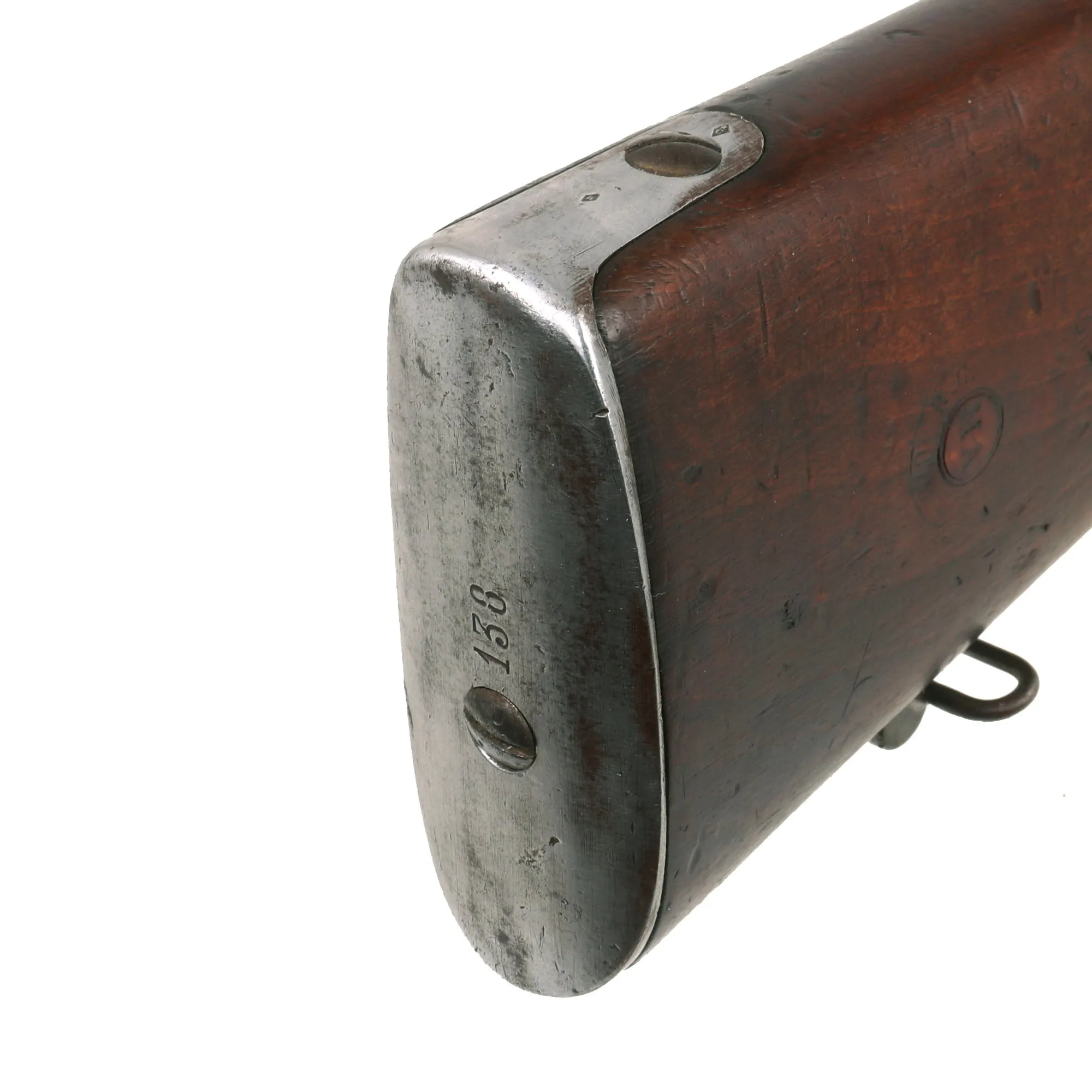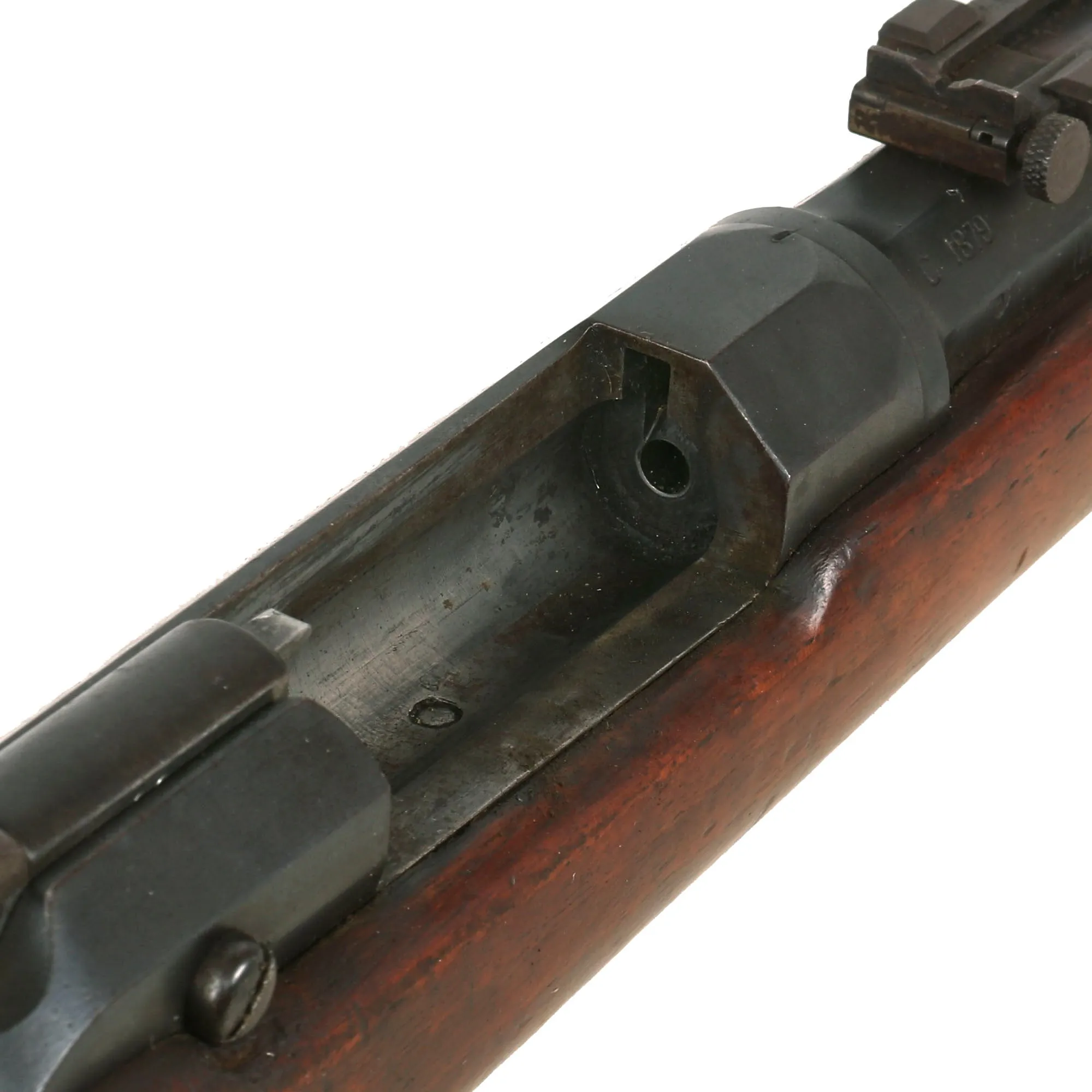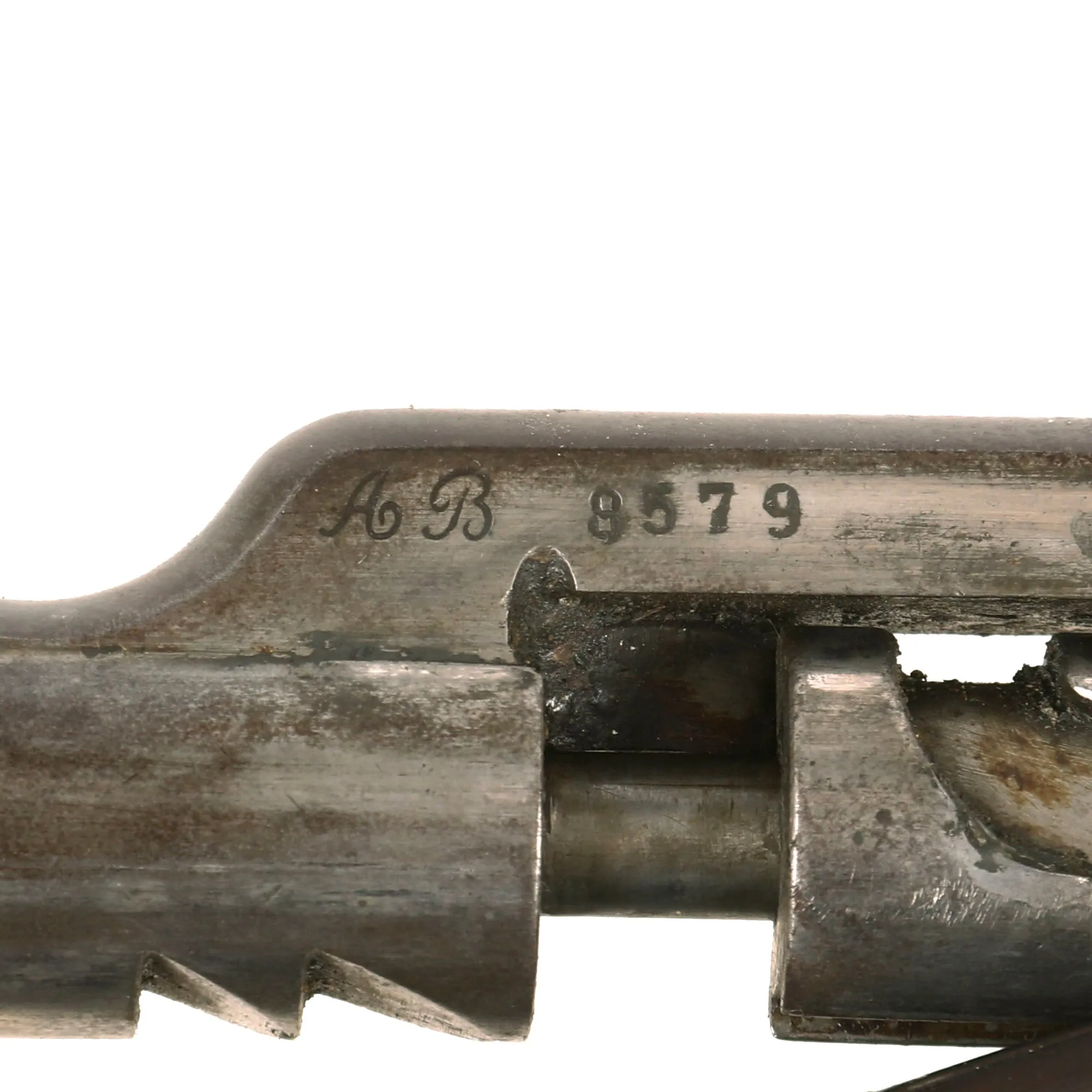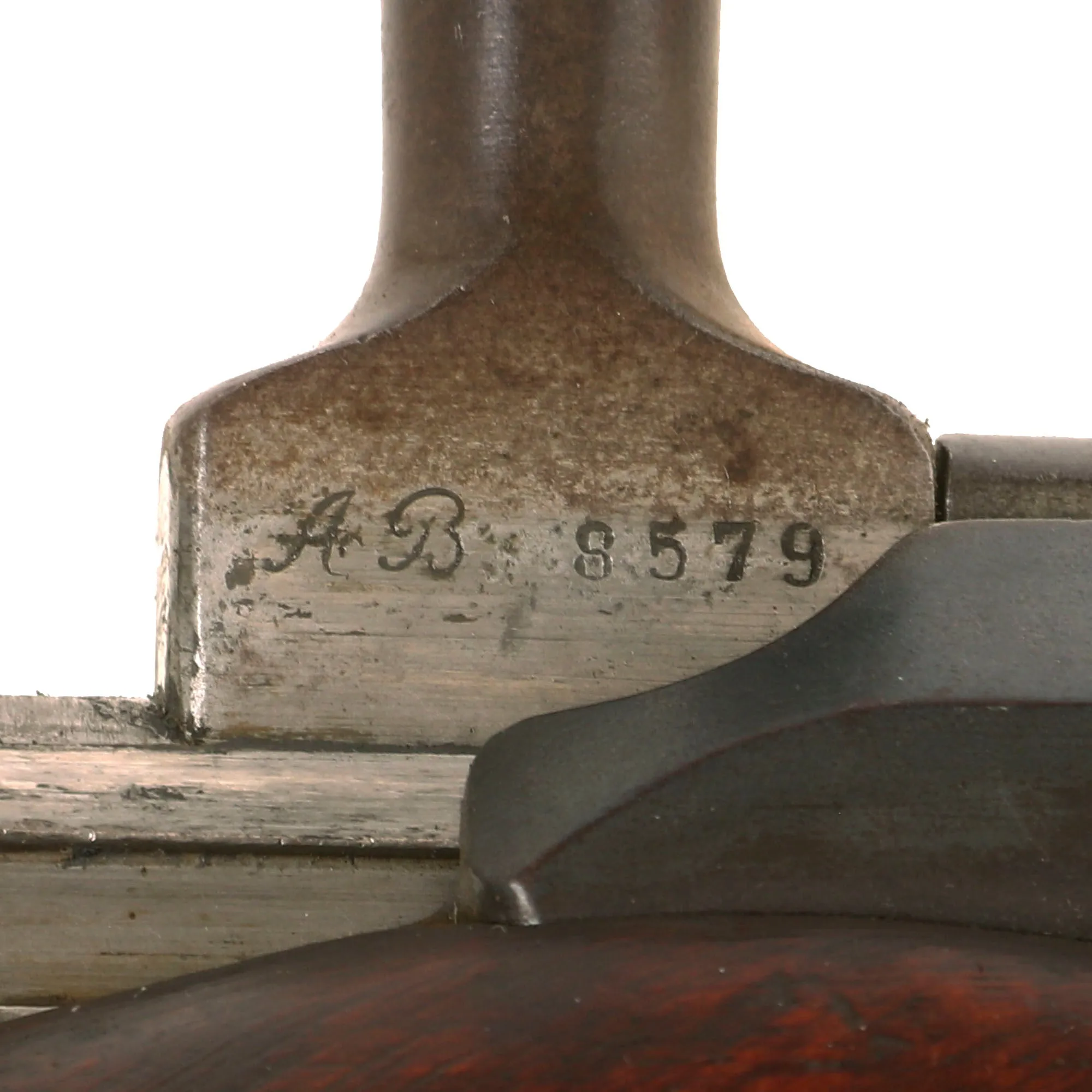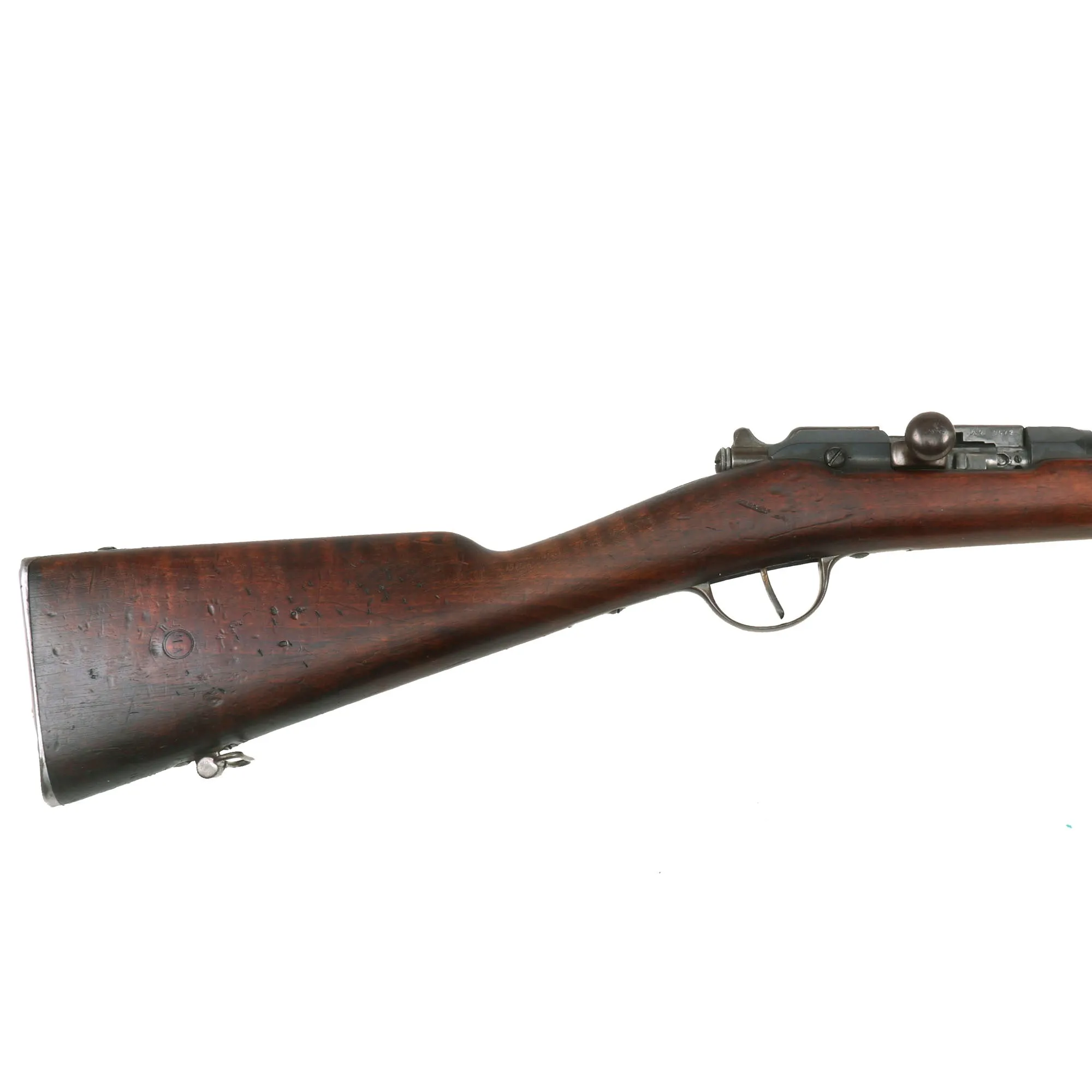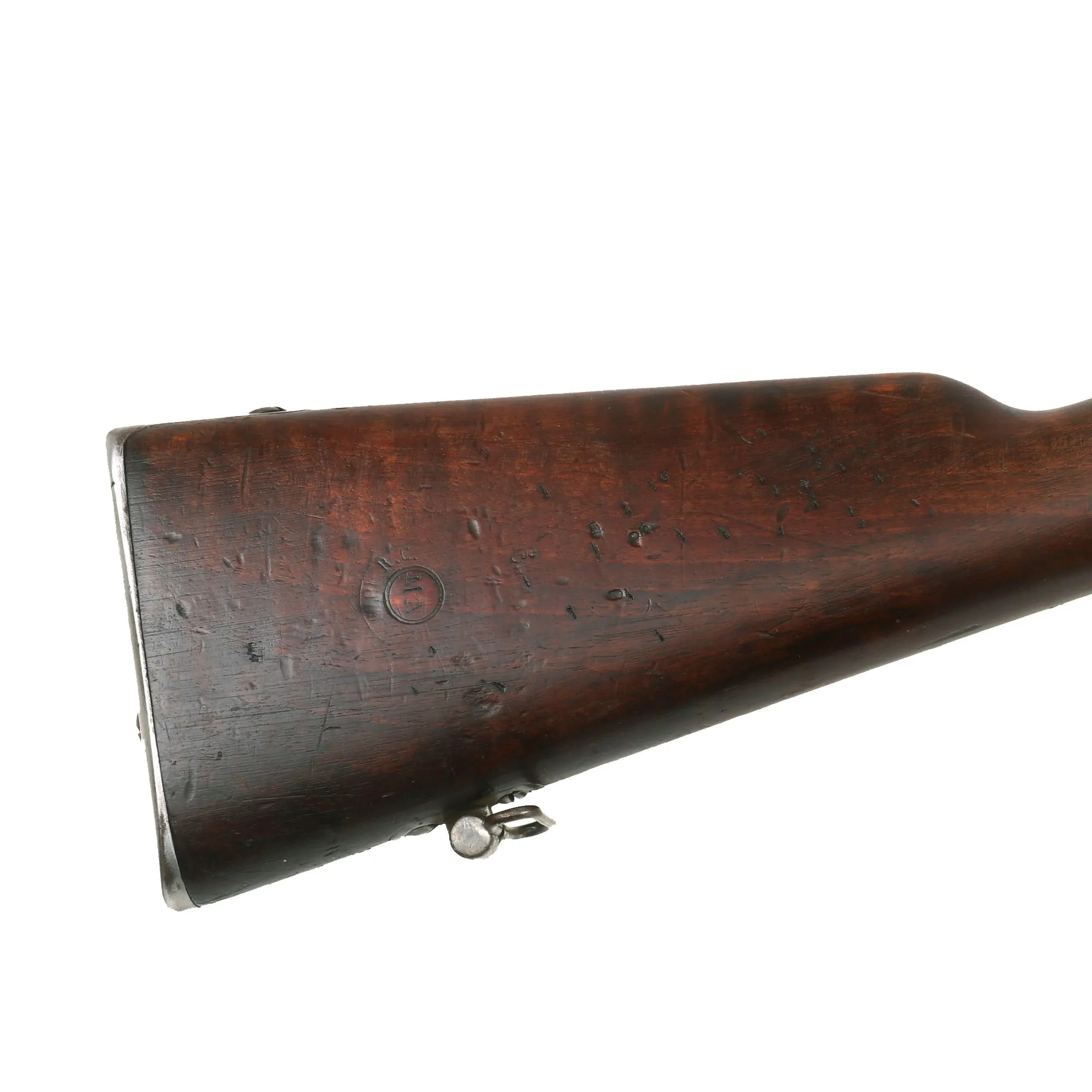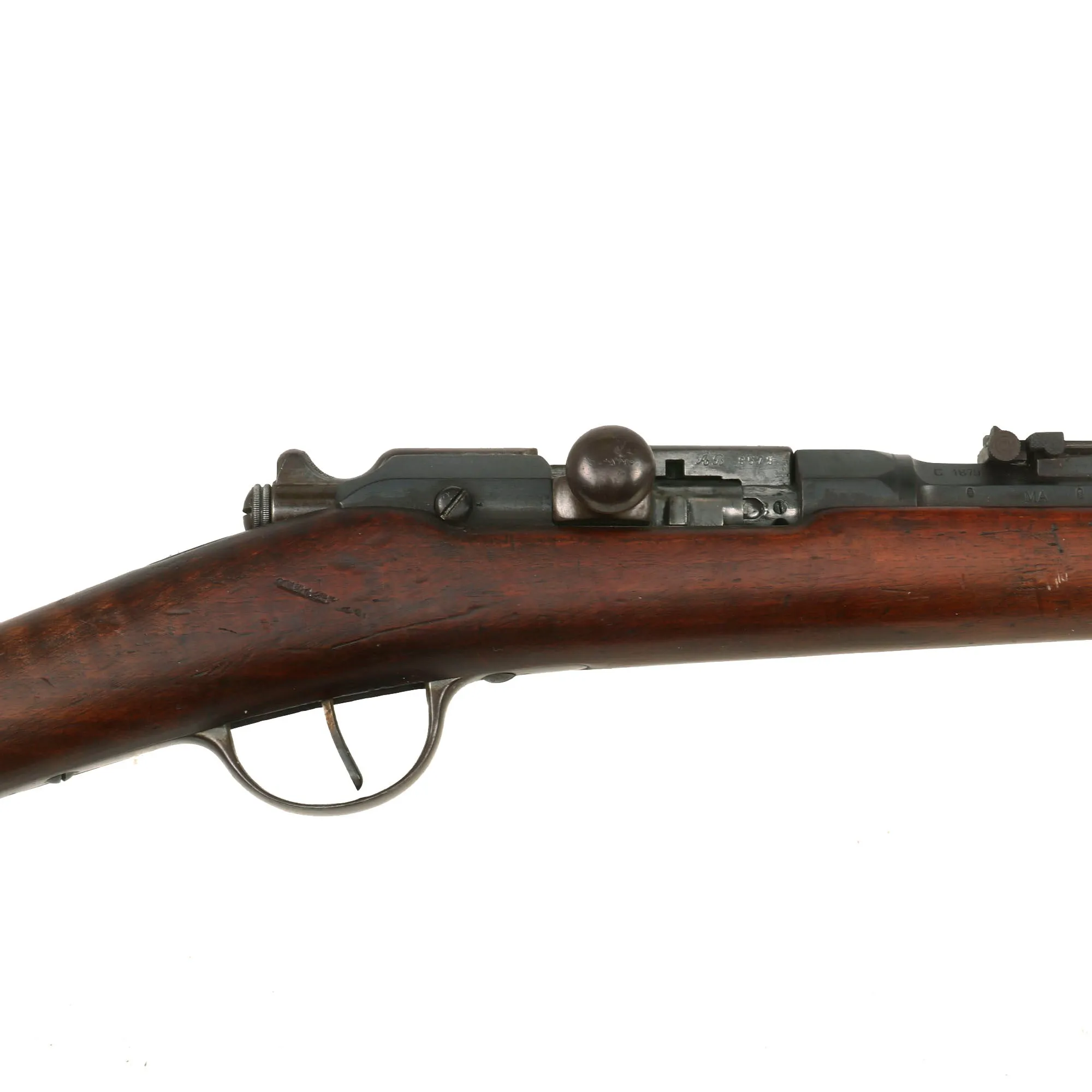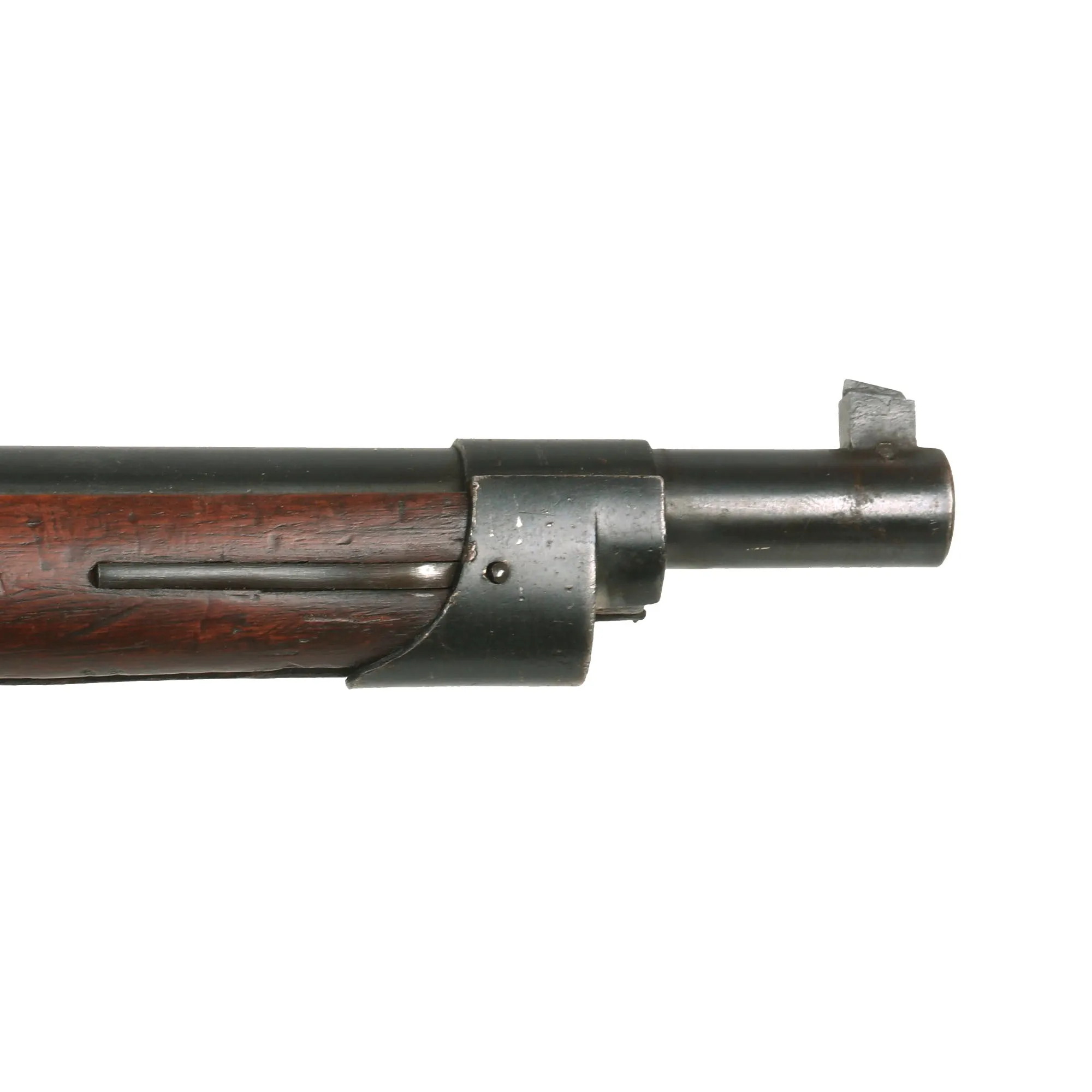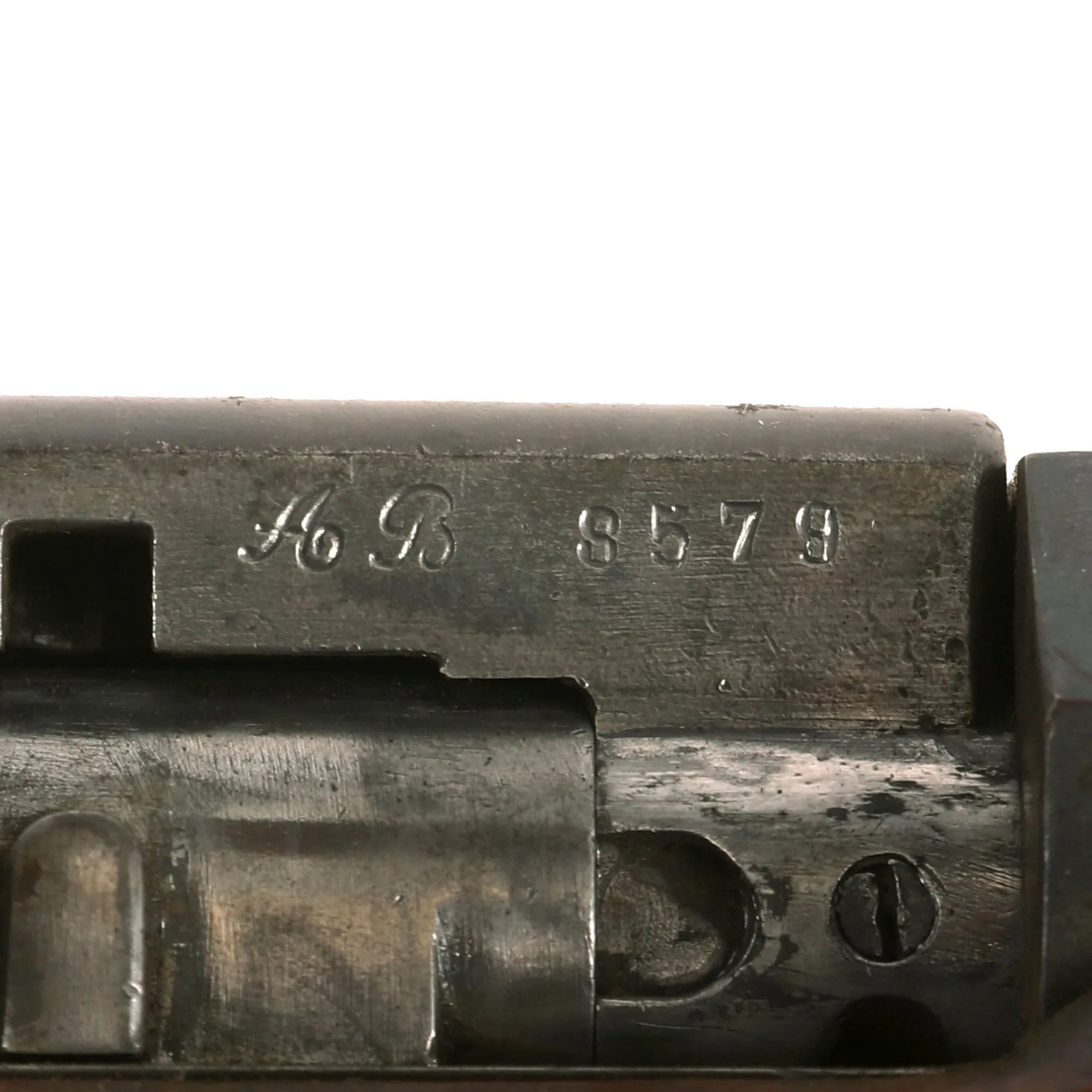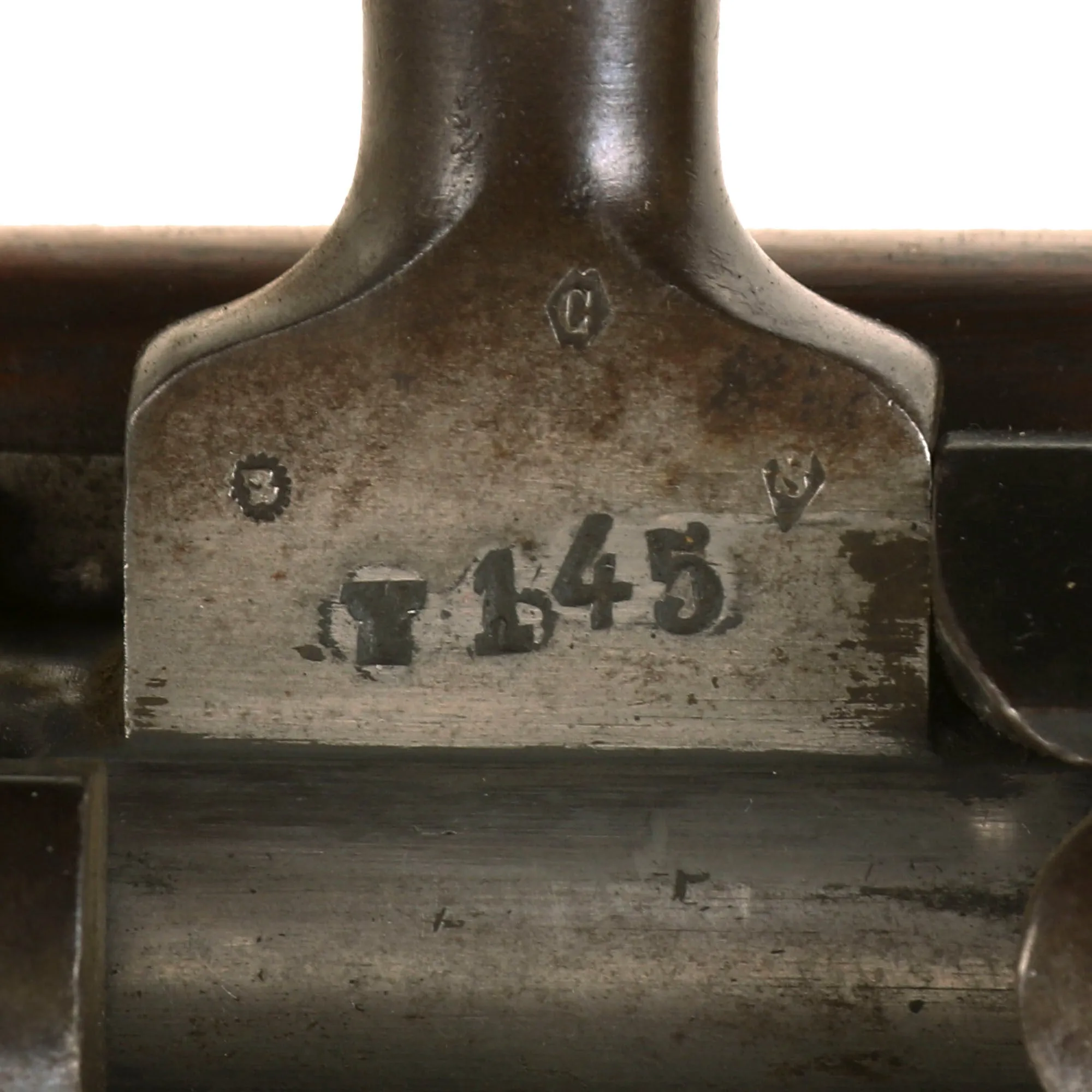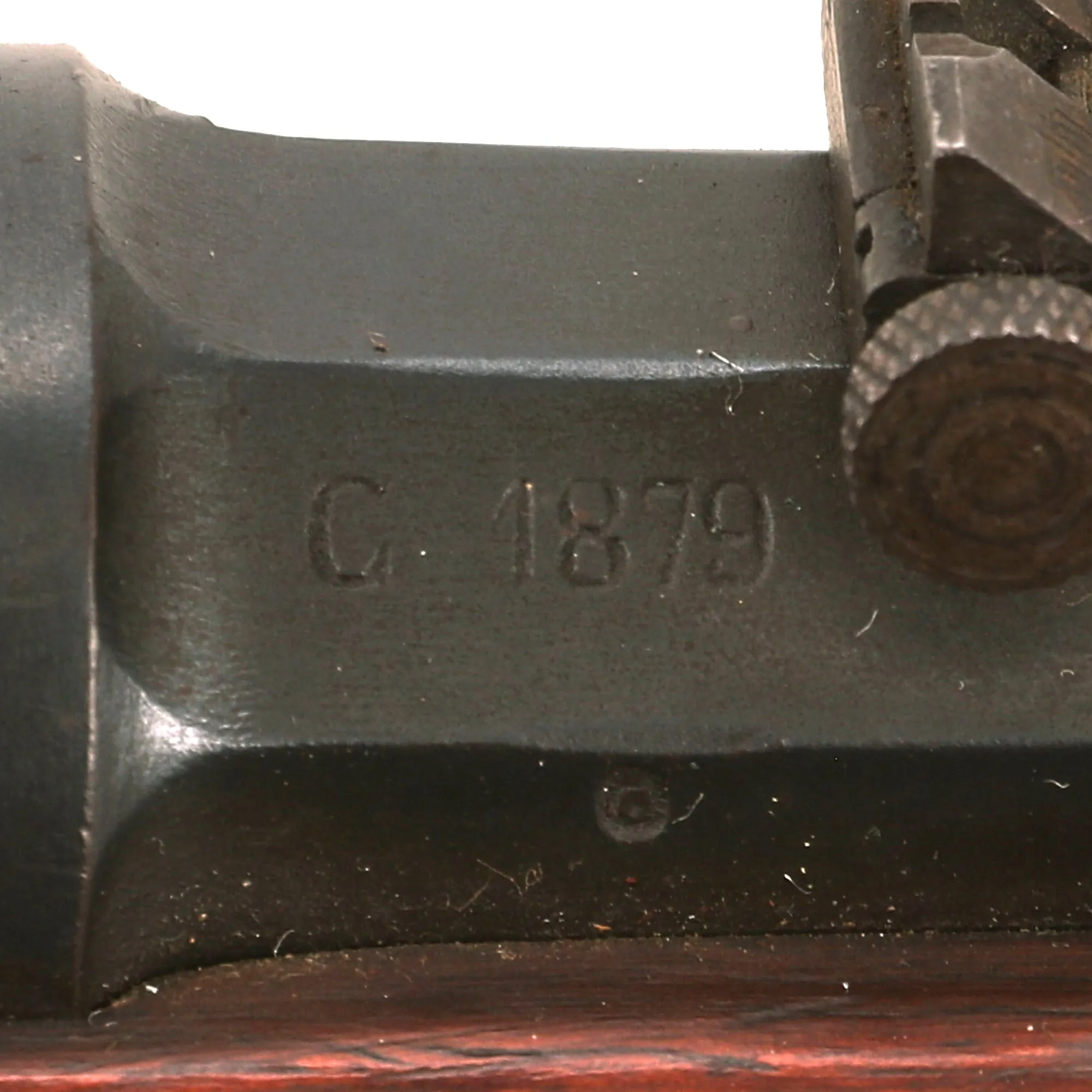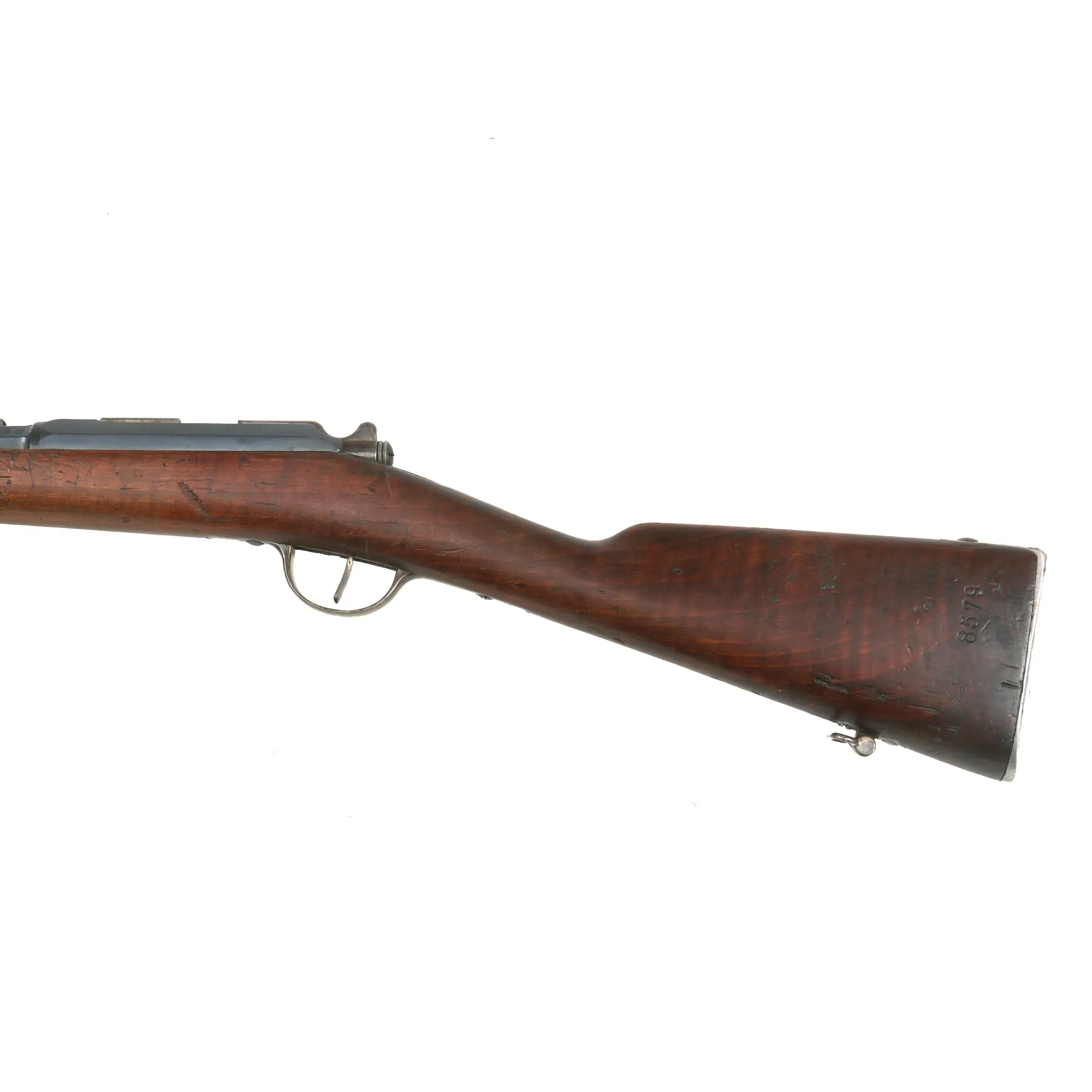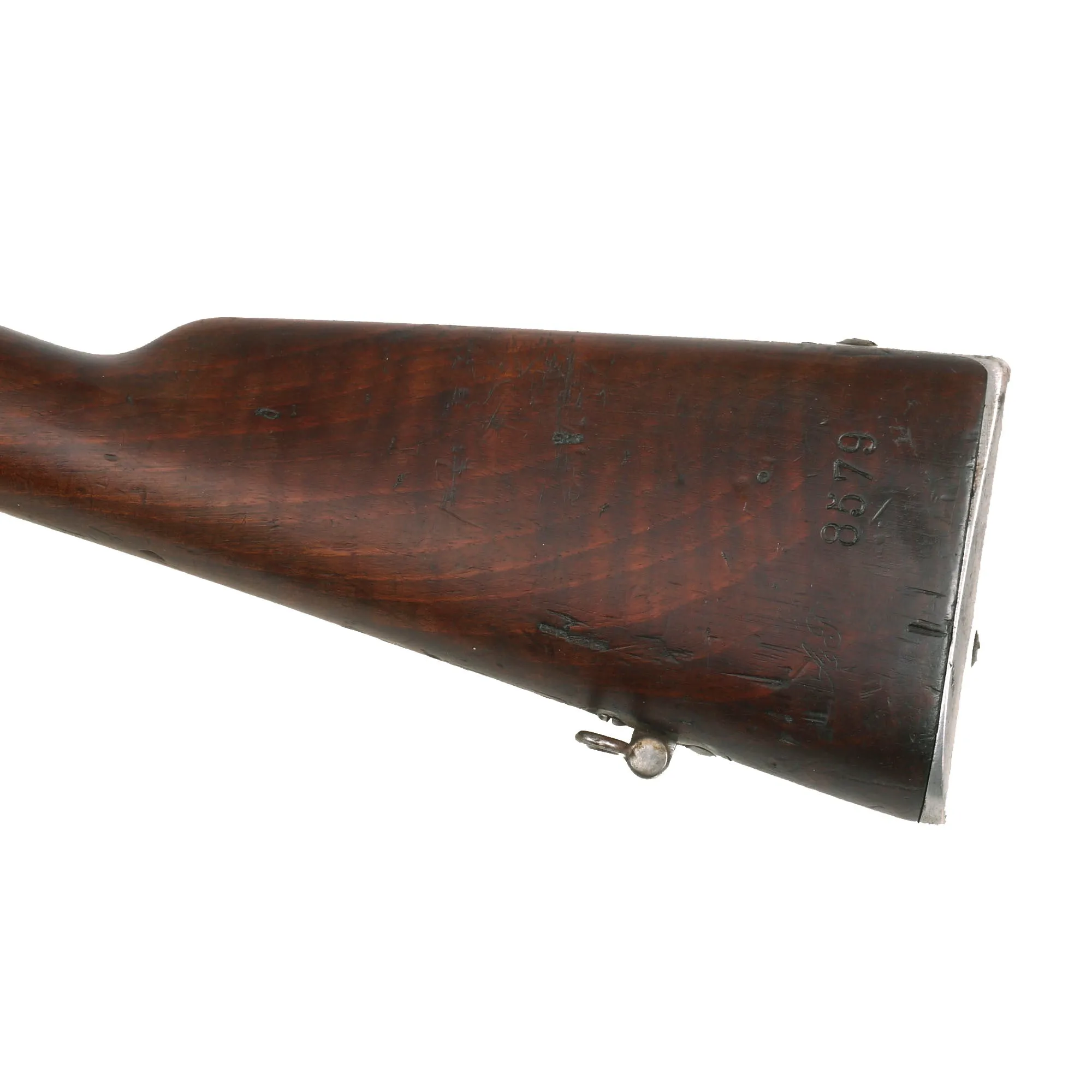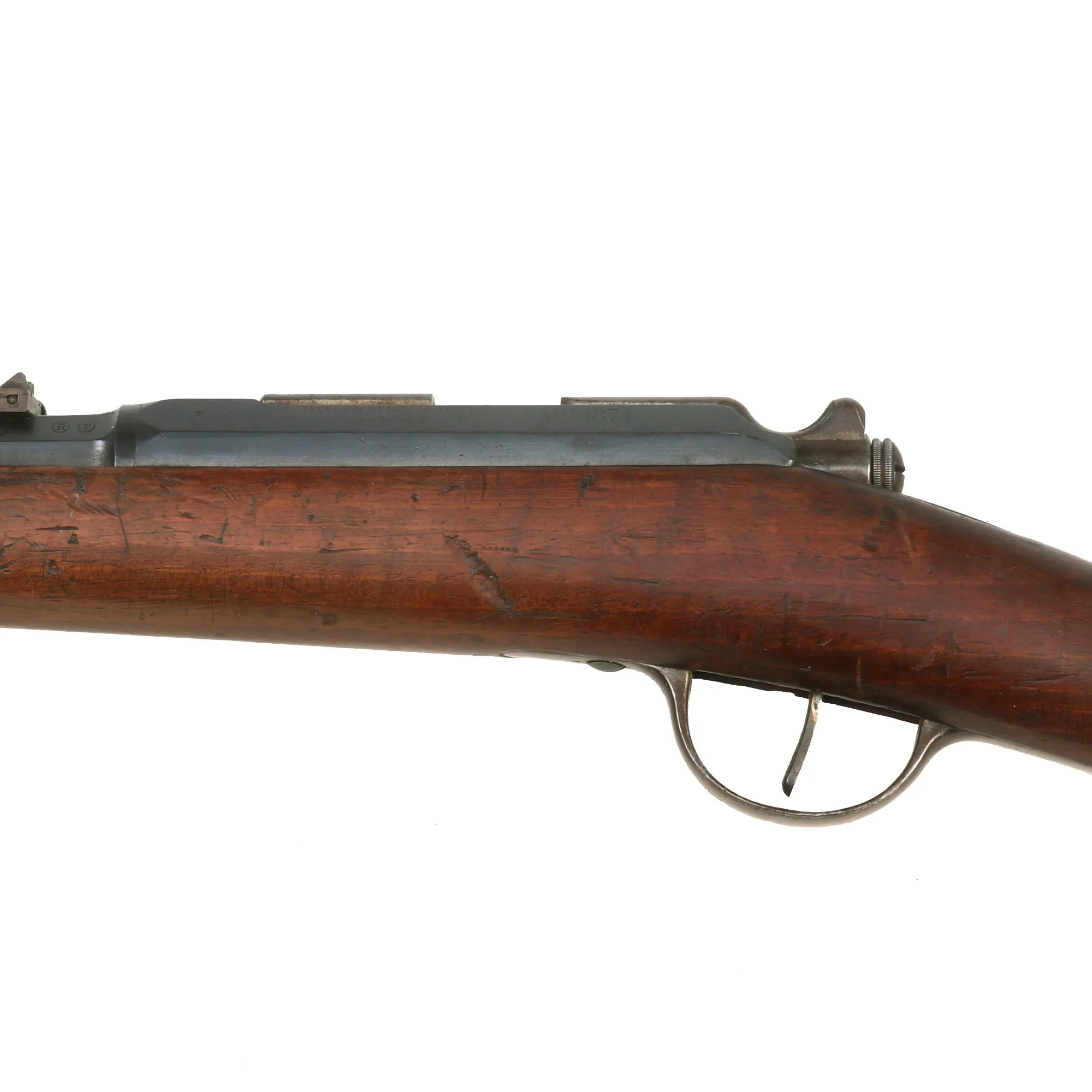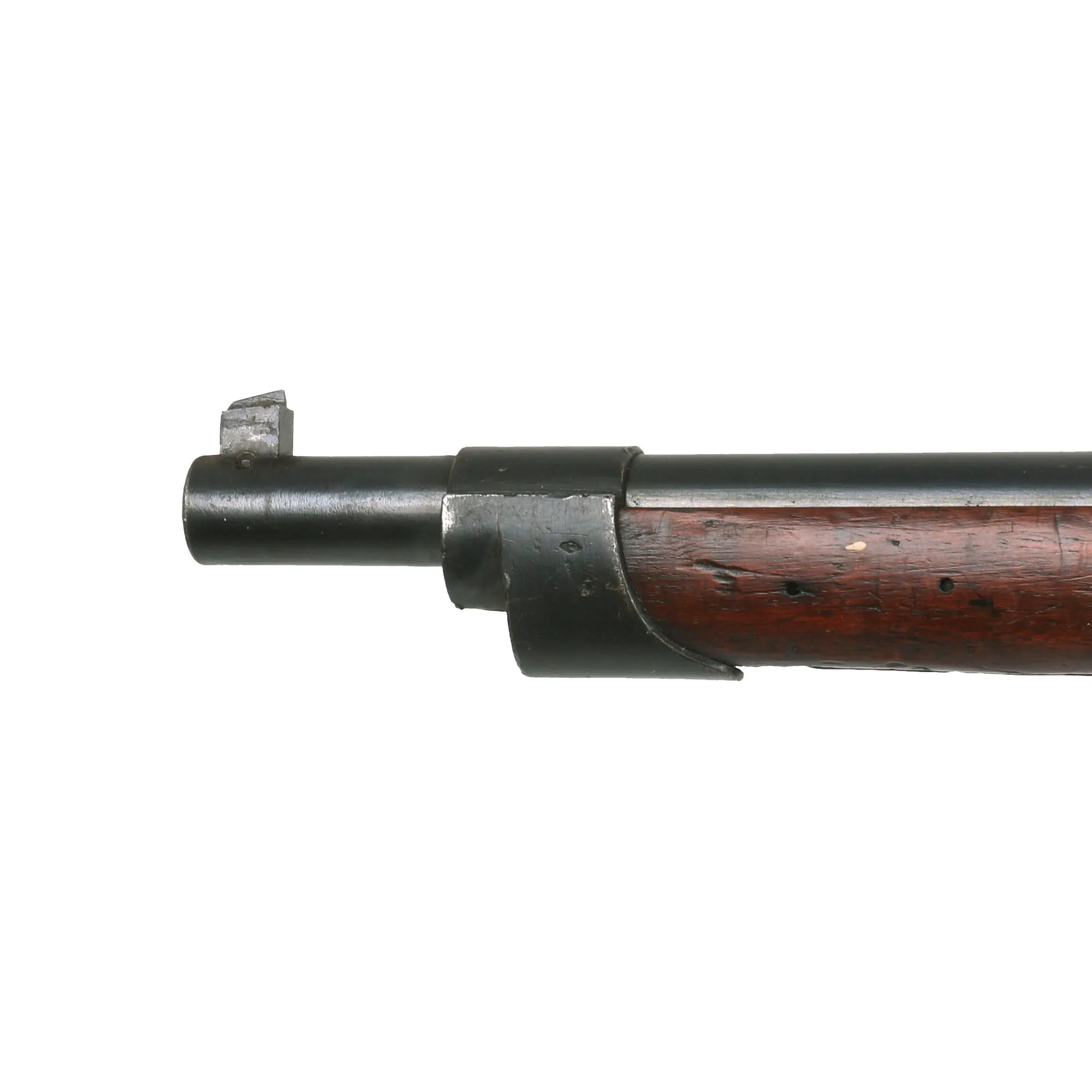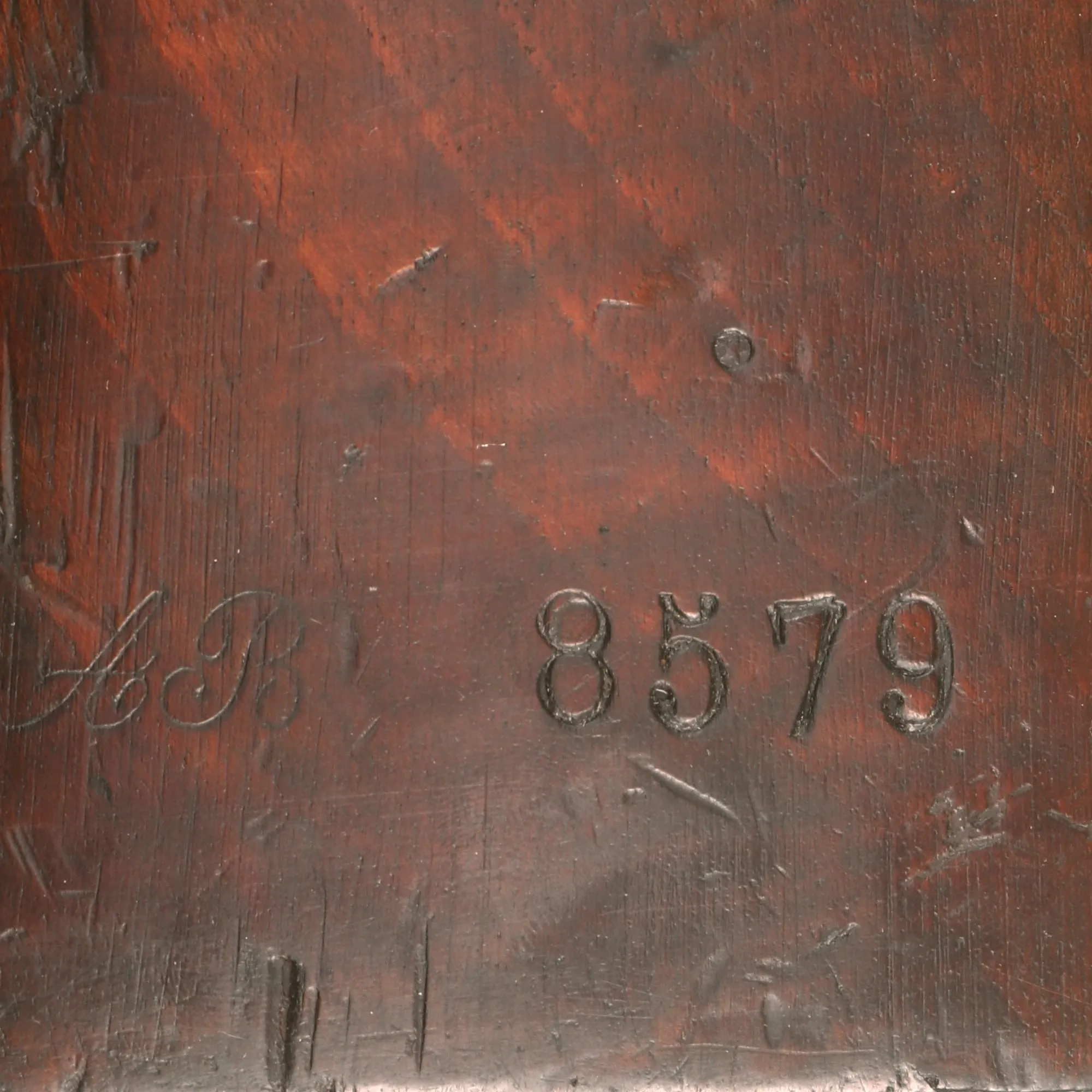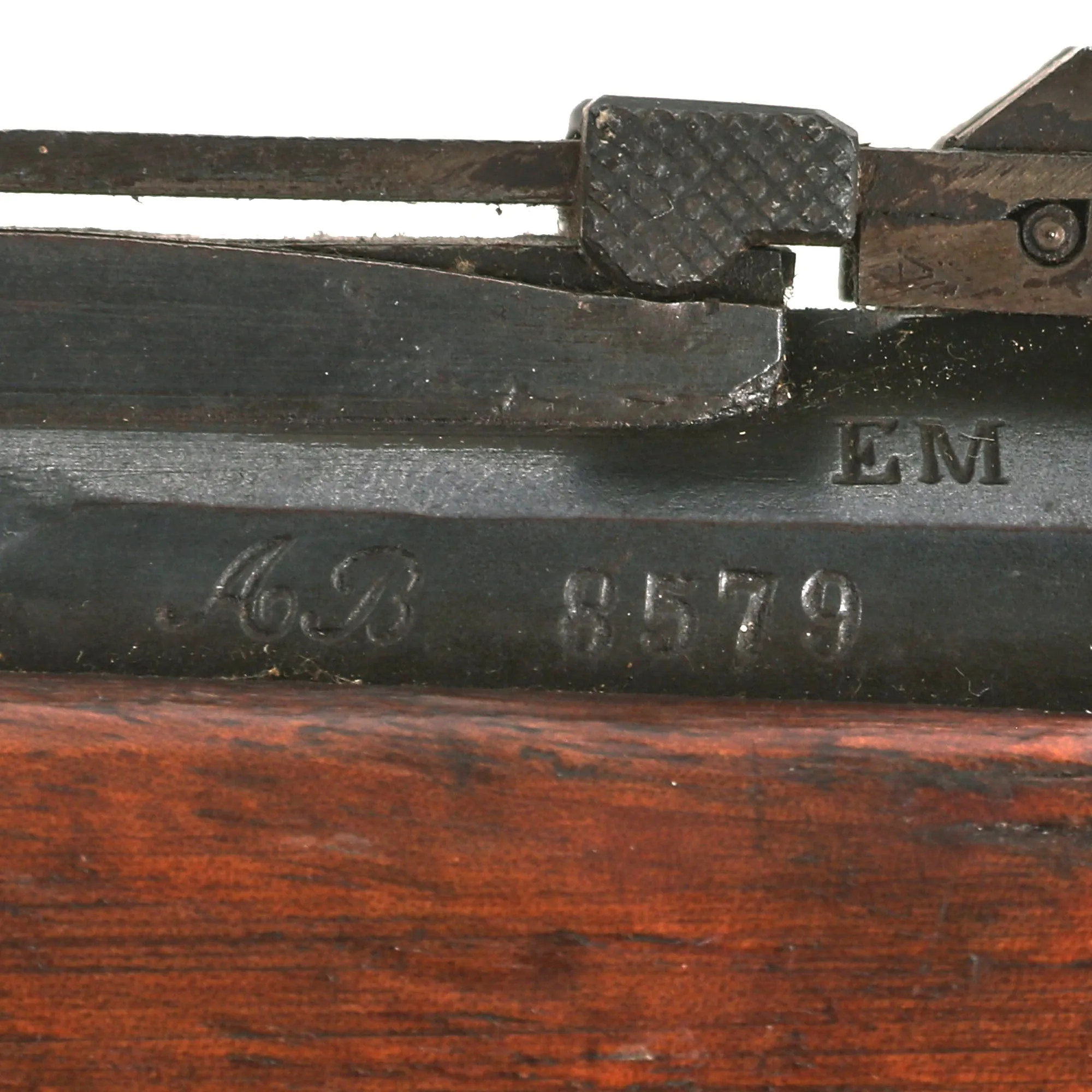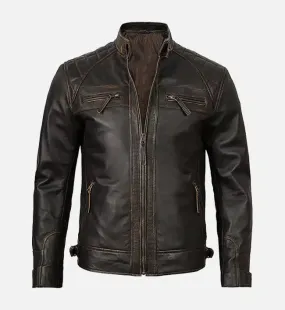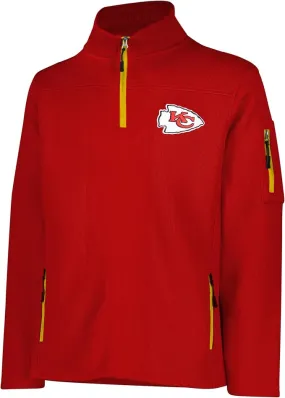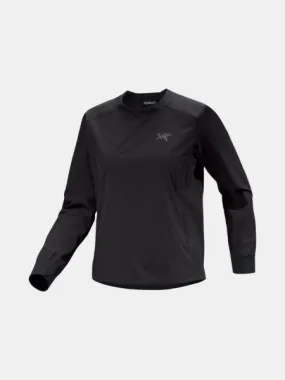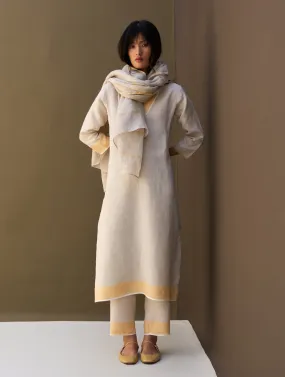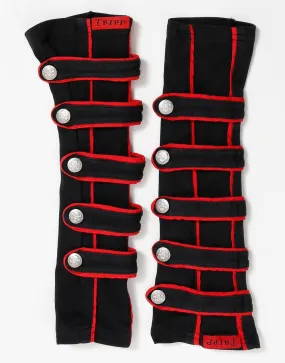Original item: Only One Available. The Fusil Gras Modèle 1874 was one of the primary French service rifle of the late 19th century. The Gras used by the French Army was an adaptation to metallic cartridge of the Chassepot Mle 1866 breech-loading rifle, developed by Colonel Basile Gras. The first examples were in fact conversions of the Chassepot, replacing the needle-fire system with a bolt action one.
This is very interesting example of the Fusil Gras Modèle 1874 M80, which was converted at arsenal to a .22 trainer for target practice, most likely during the WWI era or later. The bolt was modified, and the barrel was sleeved down to .22. The barrel and stock were also shortened slightly, reducing the overall length by about 4 1/2 inches. A section of the fore stock was removed to shorten the stock, which was left unglued, or the glue joint came apart. A previous example had an angled scarf joint, but these conversions do not appear to have been entirely standardized. The rear sight was replaced with a modern style sight adjustable for windage, and the front sight was replaced as well.
The receiver on the rifle is clearly marked MANUFACTURE D'ARMES / Châtellerault, and to the right is the model designation Mle 1874. The rifle has a clear issue date marking of C. 1879 stamped into the right barrel nocks form, for manufacture at the Imperial Arsenal at Châtellerault in 1879. There is no "M80" marking, most likely due to the early manufacture date. The left side of the barrel is marked with serial number AB 8579, which matches the number on the bolt, though there are other numbers stamped onto the bolt as well. The stock is also marked with this serial number, so it does not look like any parts were swapped out during the conversion, making this an "All Matching" example!
Condition is very good, with the metalwork looking like it was re-blued at arsenal when converted to a .22 trainer. This is still very well retained, showing a bit of past peppering that was cleaned away before the refinish. The action functions well, with a crisp dry fire. The bore is in very good condition, showing clear lands and grooves with a mostly bright finish. There is just a bit of overall oxidation and fouling haze. The stock is in great shape, with a lovely color and a good amount of "curl" to the grain near the butt stock.
A lovely condition very interesting Antique French Gras Rifle, converted to a .22 Training target rifle. Ready to research and display!
Specifications:-
Year of Manufacture: 1879 - Converted Later
Caliber: .22
Cartridge Type: Rimfire Cartridge
Barrel Length: 27 3/4 Inches
Overall Length: 47 Inches
Action type: Bolt-Action
Feed System: Single Shot
This rifle had a caliber of 11mm and used black powder centerfire cartridges that weighed 25 grams. It was a robust and hard-hitting weapon, but it had no magazine and so could only fire one shot after loading. It also had a triangular-shaped sword bayonet, known as the Model 1874 "Gras" sword bayonet. It was replaced by the Lebel rifle in 1886, the first rifle to use smokeless gunpowder. In the meantime, about 400,000 Gras rifles had been manufactured.
The metallic-cartridge Gras was manufactured in response to the development of the metallic cartridge designed by Colonel Boxer in 1866 (Boxer cartridge), and the British 1870 Martini-Henry rifle. Those were soon emulated by the Germans with the 1871 Mauser.
The Hellenic Army adopted the Gras in 1877, and it was used in all conflicts up until the Second World War. It became the favourite weapon of Greek guerrilla fighters, from the various revolts against the Ottoman Empire to the resistance against the Axis, acquiring legendary status. The name entered the Greek language, and grades (γκράδες) was a term colloquially applied to all rifles during the first half of the 20th century. It was manufactured by various arms factories in France, though most of the rifles sent to Greece were made by the ŒWG Austrian Arms Factory at Steyr.





